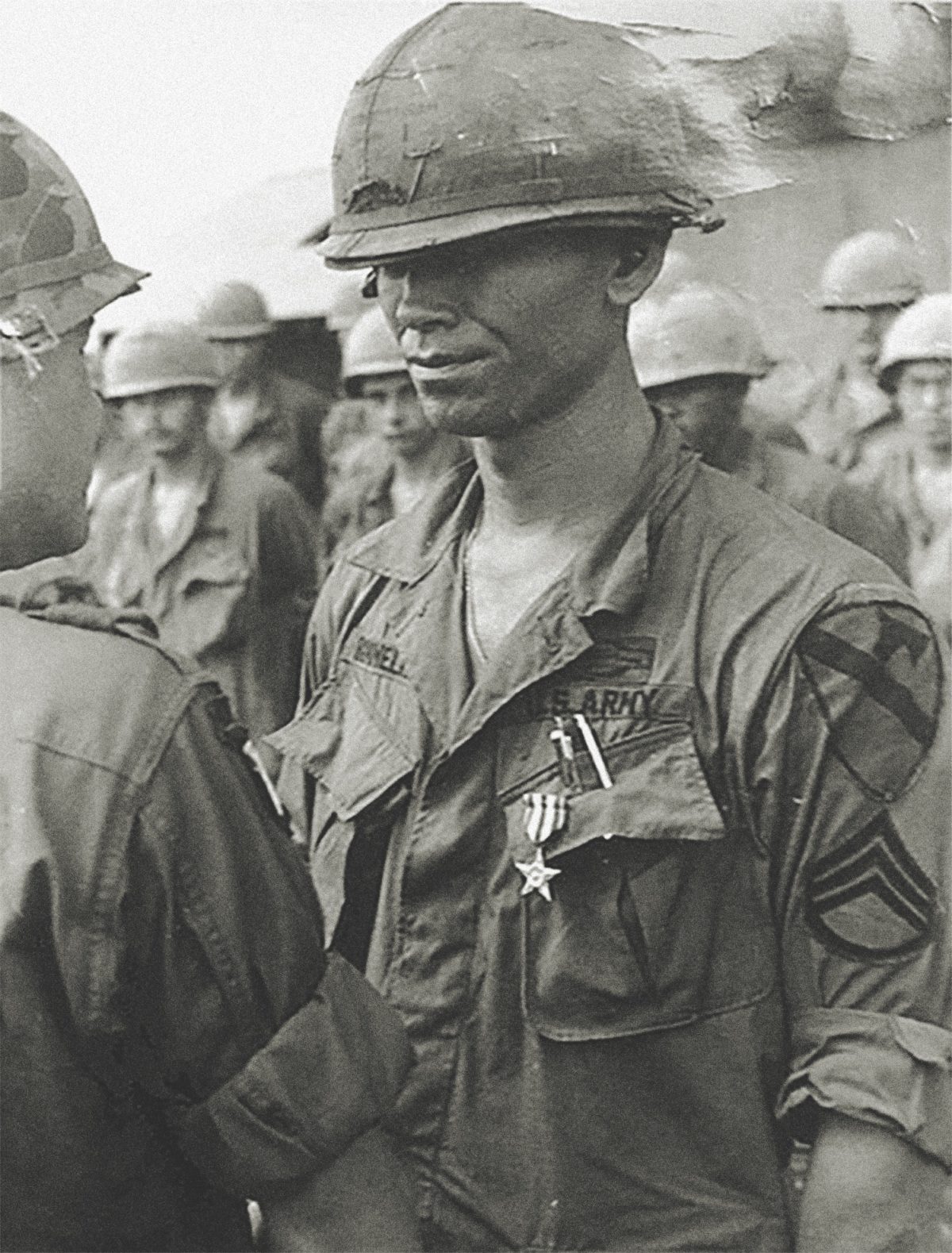In World War I, the U.S. Army established the Citation Star, which in 1932 became the Silver Star, its third highest award for combat heroism. The Silver Star was authorized for the Navy and Marine Corps in August 1942. In World War I and early World War II, Marines serving in the Army could be awarded the Silver Star by the Army. Since the end of World War II, 141 Marines earned an Army Silver Star. Most were awarded during the Korean War when Marine and Army units had combined operations. Since that time, just 17 Marines have received a Silver Star from the Army.
One warrior is possibly the only person awarded a Silver Star from the Navy as a Marine who went on to receive an Army Silver Star as a soldier. On Jan. 19, 1968, 28-year-old Sgt. Clyde L. Bonnelycke was a Marine sergeant serving as a platoon sergeant with Company C, 1st Battalion, 3rd Marine Regiment, 3rd Marine Division, supporting a vastly outnumbered Marine unit near the Demilitarized Zone separating North and South Vietnam.
The Marines were pinned down by small-arms and automatic weapons fire from numerous fortified positions. Bonnelycke charged about 30 yards through fire-swept terrain to reach an enemy bunker. Ignoring the hail of fire surrounding him, the sergeant attacked the bunker and threw a grenade into it, enabling his platoon to continue its attack and defeat the enemy. For his actions that day, Bonnelycke was nominated for a Silver Star.
Before his award was approved, Bonnelycke completed his tour and returned home to Tacoma, Washington, in summer 1968 and accepted his discharge after more than 10 years in the Marine Corps. Civilian life didn’t suit him, and after a few weeks of rest he enlisted again, this time in the Army. He volunteered for another tour in Vietnam—but the Army wanted him in the 3rd Infantry Division in Germany. While he was there, the Navy Department, which had been looking for Bonnelycke to present the Silver Star, finally tracked him down.
But Bonnelycke wasn’t satisfied. “I wanted to go back where the fighting was at,” he said. After numerous requests for reassignment, Bonnelycke got his wish and returned to Vietnam in 1969 as an Army sergeant in a platoon of Company C, 2nd Battalion (Airmobile), 8th Cavalry Regiment, 1st Cavalry Division (Airmobile). His platoon was ambushed on July 13, 1969, in Tay Ninh province, northwest of Saigon bordering Cambodia.
Numerous men were wounded. Realizing there was no firebase near enough to provide cover for a counterattack, Bonnelycke moved to his wounded machine gunner and picked up the weapon. Laying a base of fire, he enabled his platoon to mount an attack. When his ammunition was gone, he seized several grenades and silenced an enemy bunker with accurate throws. His actions allowed five platoon members to be evacuated and enabled his unit to break the enemy ambush.
Those heroics resulted in an Army Silver Star, adding to the one Bonnelycke received wearing a Marine uniform. But he still wasn’t done.
One month later on Aug. 12, Bonnelycke’s base came under an intense rocket, mortar and ground attack. Now a staff sergeant commanding an Army platoon, Bonnelycke left the safety of his bunker and went to one that had suffered a direct hit. Pulling wounded men to safety, he raced to the berm and fired a machine gun until he was out off ammunition. Bonnelycke then made his way to another gun and continued firing. Disregarding his wounds, he returned to the berm while firing on the enemy and helped carry wounded men to safety—actions that led to a second Silver Star from the Army.
Today Bonnelycke, who retired as a master sergeant on May 1, 1988, after 10 years as a Marine and 19 years of Army service, lives in Lytle, Texas. Along with his three Silver Stars, he has four Bronze Stars and two Purple Hearts. I interviewed him and said I could find no record of any other man receiving Silver Stars while serving with the Marine Corps and then the Army. His reply was simply: “Really? Can I hand the phone to my wife and have you tell her that?” I did.
Doug Sterner, an Army veteran who served two tours in Vietnam, is curator of the Military Times Hall of Valor database of U.S. valor awards.
This article appeared in the April 2022 issue of Vietnam magazine.






